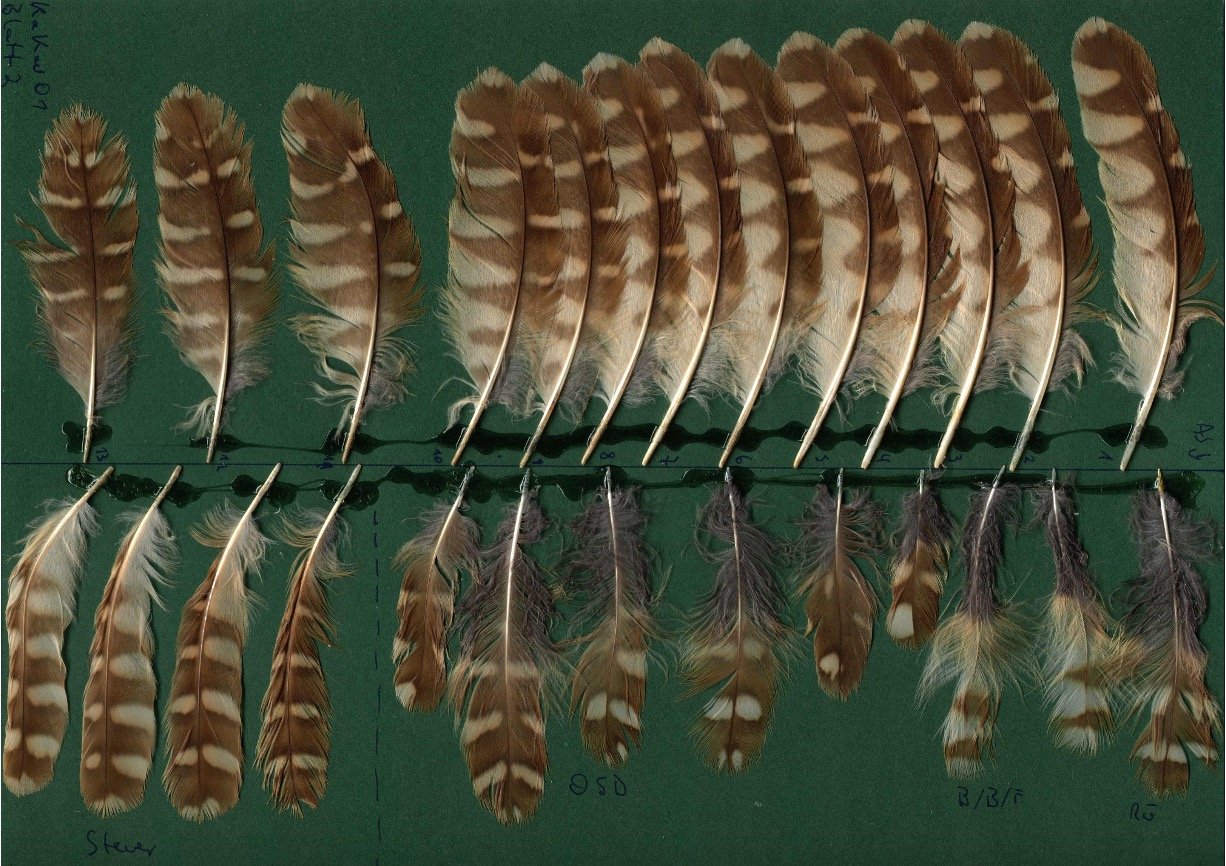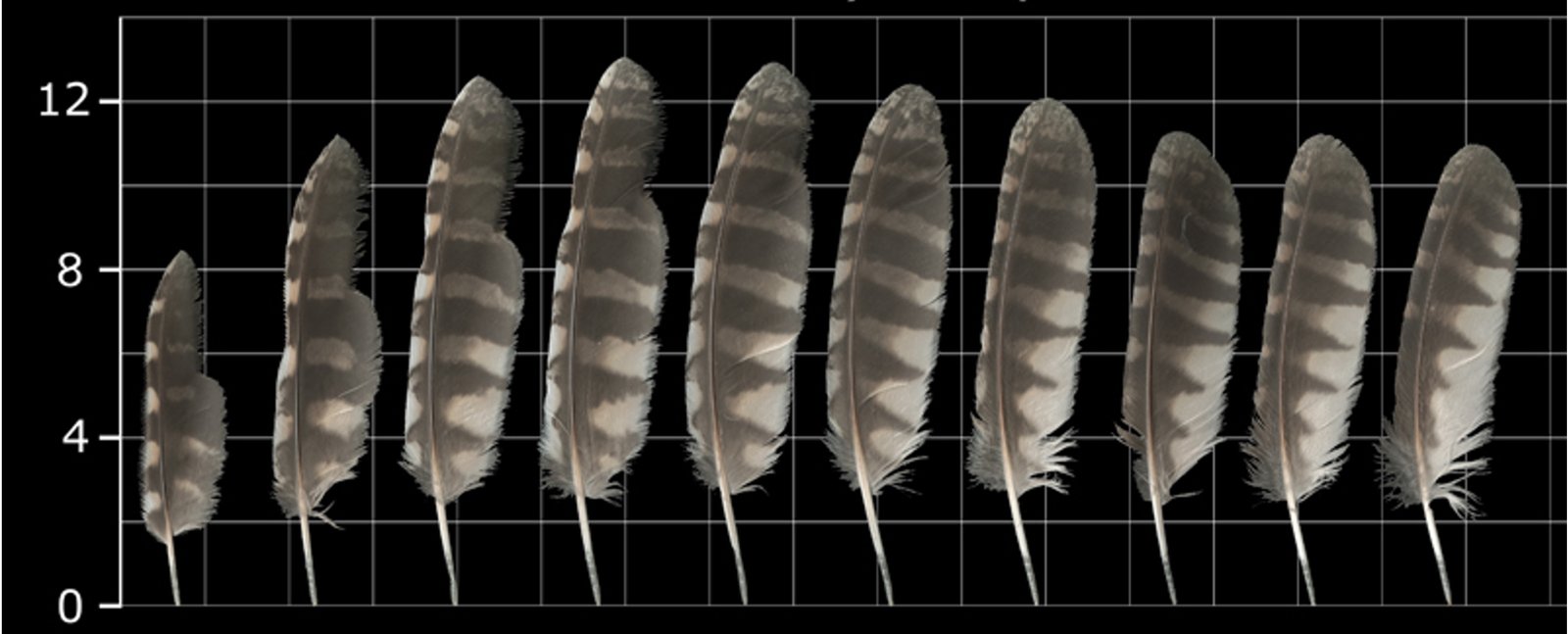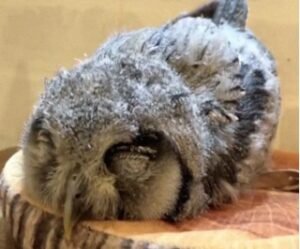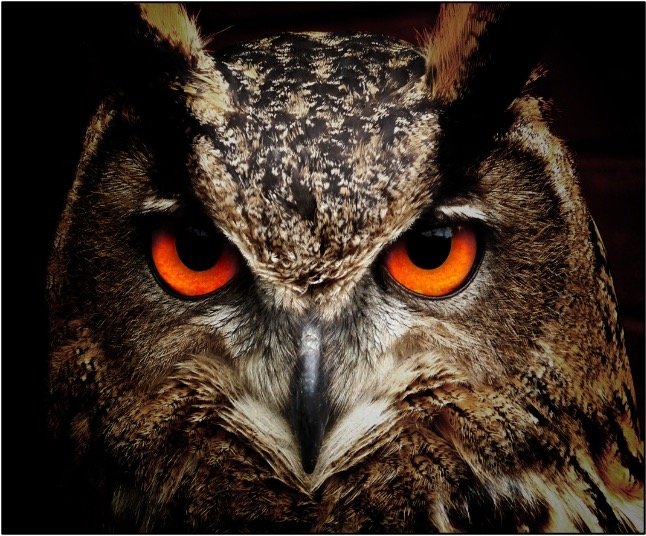
Owl Feathers
Owls are fascinating creatures with distinct characteristics and adaptations that allow them to thrive in a variety of habitats worldwide. The feathers of owls are one of their most distinctive characteristics. Owl feathers are designed for flight, insulation, and stealth hunting.
Owls’ bodies are covered in a soft, downy layer of feathers that provides excellent insulation and warmth in cold weather. Their larger feathers are classified as flight feathers or contour feathers.
Flight feathers, which can be found on the wings and tail, are necessary for flight. Contour feathers, on the other hand, cover the rest of the owl’s body and give it shape and aerodynamic properties during flight. What distinguishes owl feathers is their ability to fly silently, which is an important adaptation for hunting.

The fringed, comb-like structure of their flight feathers breaks up the sound of the air flowing over their wings, making their flight almost silent. Furthermore, the softness of their feathers muffles the sound of their wings flapping, allowing them to hunt almost silently.
Owl feathers come in a variety of colors and patterns, ranging from the classic brown and white barred pattern of the Barn Owl to the Snowy Owl’s striking black and white spotted feathers.
These colors and patterns serve as excellent camouflage for the owl, allowing it to blend in with its surroundings and avoid detection by both prey and predators.

Types of Owl Feathers
Owl feathers are in a variety of shapes, sizes, and types, each with its own distinct function and adaptation. The following are some of the most common owl feathers:
1. Contour feathers: Contour feathers are the feathers that cover the owl’s body, giving it a streamlined shape and aerodynamic properties while flying. They are critical for the owl’s balance and stability during flight.
2. Flight feathers: These feathers, which are found on the wings and tail, provide lift and thrust during flight. Primary flight feathers, which are attached to the owl’s hand, and secondary flight feathers, which are attached to the arm, are the two types.
3. Down feathers: These soft and fluffy feathers are found close to the owl’s skin. They provide excellent insulation and aid in the owl’s body heat retention in cold weather.
Owl Eggs: Description, Images, and Fun Facts
4. Filoplumes: Filoplumes are small, hair-like feathers that surround the contour feathers. They detect changes in the position of the contour feathers and assist the owl in maintaining its balance during flight.
5. Semiplumes: These feathers are a hybrid of contour and down feathers. They have a central shaft with soft barbs for insulation and a tuft of stiff barbs at the tip to help keep the feather’s shape.
6. Bristles: Bristles are stiff, hair-like feathers found around the owl’s beak and eyes. They shield the owl’s eyes from dust and debris while flying and aid in prey capture.

How to Identify Owl Feathers?
For birdwatchers and nature enthusiasts, identifying owl feathers can be a fun and rewarding experience. Here are some hints for identifying owl feathers:
1. Examine the size and shape: Owl feathers are larger and more rounded than those of other birds. They are also distinct in appearance, with a curved leading edge and a tapered trailing edge.
2. Examine the color and pattern: From the classic brown and white barred pattern of the Barn Owl to the striking black and white spotted feathers of the Snowy Owl, owl feathers come in a variety of colors and patterns. The color and pattern can help identify the species of owl.
3. Examine the texture: Owl feathers have a velvety texture and are soft and fluffy to the touch. They’re also light and flexible.
4. Look for special adaptations: Some owl feathers have special adaptations that make them ideal for hunting, such as the fringed edge of flight feathers, which allows for silent flight.
5. Use a bird field guide: A bird field guide can be a useful resource for identifying owl feathers. Look for a guide that includes feather illustrations as well as descriptions of the owl species found in your area.

Owl Feathers vs Hawk Feathers
| Feature | Owl feathers | Hawk feathers |
| Leading edge | Curved | Curved |
| Trailing edge | Tapered | Tapered |
| Softness | Softer and fluffier | Thinner and firmer |
| Silent flight | Specialized structure for silent flight | Not specialized for silent flight |
| Speed | Slower flight due to softer feathers | Faster flight due to thinner, firmer feathers |
| Coloration | Cryptic and camouflage-like | Brightly colored and patterned |
| Adaptations for cold weather | Excellent insulation and warmth retention | Good insulation, but not specialized for warmth retention |
| Adaptations for hunting | Specialized for silent flight and stealth hunting | Not specialized for silent flight or stealth hunting |
Great Horned Owl Feathers

Due to wingspans of up to 4 feet, Great Horned Owl feathers are relatively large. They have an aerodynamic shape with a curved leading edge and a tapered trailing edge for efficient flight.
The feathers of a Great Horned Owl are typically a mottled or barred pattern that provides excellent camouflage in forested environments. They also have distinct feather tufts, or “horns,” on the tops of their heads. Because Great Horned Owls are skilled hunters who rely on surprise and stealth to catch prey, their feathers have several adaptations for silent flight.
Their primary feathers have a serrated fringe on the leading edge that helps to break up turbulence and reduce noise. Furthermore, their flight feathers have a soft, velvety texture that muffles sound.
The feathers of the Great Horned Owl are also excellent insulators, which helps to keep the bird warm in cold weather. They have a fluffy structure that traps air and aids in the retention of heat near the body.
Barn Owl Feathers

Barn Owl feathers are extremely soft and fluffy, allowing them to fly quietly and with little turbulence. They have a texture similar to cat fur and are softer than most other owl feathers.
Barn Owl feathers are typically light in color and mottled with white, gray, and brown. This helps the bird blend in with the moonlit sky while also providing excellent insulation in cold weather.
The feathers of Barn Owls have several adaptations for silent flight, including a serrated leading edge on their primary feathers, which helps break up turbulence and reduce noise.
Barn Owl feathers have a unique structure that helps to channel sound towards their ears, which are asymmetrically shaped and located on the sides of their head for better directional hearing.
Barn Owls are also very maneuverable in flight, and their feathers have a distinctive shape that aids in lift and stability during turns and other maneuvers.
Barred Owl Feathers

Barred Owl feathers are brown with white bars, creating a distinct pattern that helps the bird blend in with tree bark and other natural surfaces in its forest habitat.
The feathers of the Barred Owl are also good insulators, which helps to keep the bird warm in cold weather. They have a fluffy structure that traps air and aids in the retention of heat near the body.
Snowy Owl Feathers

The snowy owl’s feathers are mostly white, with black or gray markings on the wings and tail. This provides excellent camouflage against the snowy landscape, allowing the bird to blend in and avoid predators and prey detection.
Snowy Owl feathers are excellent insulators, which aids in keeping the bird warm in the Arctic tundra’s extreme cold. They have a dense, fluffy structure that traps air and aids in the retention of heat near the body.
Snowy Owls molt once a year, during which they replace their feathers. This process takes several months and is critical for the bird’s insulating properties and flight capabilities to be maintained.
Screech Owl Feathers

Screech Owl feathers are available in two color variations: red and gray. The red morph predominates in eastern populations, while the gray morph predominates in western populations.
Both morphs have a mottled pattern of brown, gray, and white that helps them blend in with tree bark and other natural surfaces in their forest habitat.








